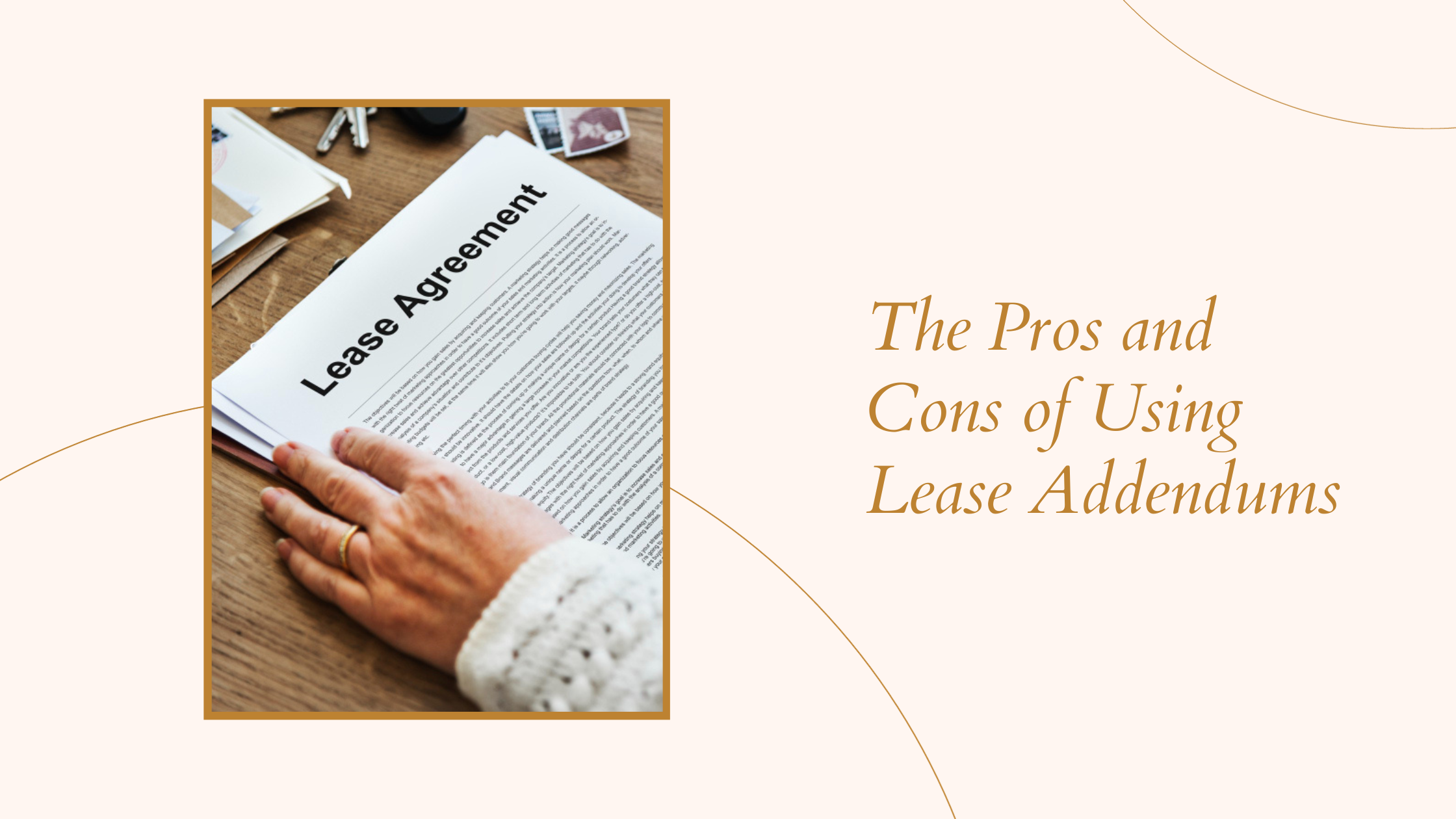The Pros and Cons of Using Lease Addendums for Your Rental Properties
RH Business Marketing Solutions
Lease agreements are the cornerstone of landlord-tenant relationships, setting the terms, responsibilities, and expectations for both parties. However, the evolving needs and circumstances of landlords and tenants often lead to the use of lease addendums - supplementary documents that modify or add specific terms to the original lease. While lease addendums can be valuable tools for tailoring agreements to unique situations, they also come with their own set of advantages and disadvantages. In this guide, we'll delve into the pros and cons of using lease addendums in your rental properties, helping you make informed decisions that benefit both you and your tenants.
Pros of Using Lease Addendums:
● Flexibility and Customization: One of the most significant advantages of using lease addendums is the flexibility they offer. They allow landlords and tenants to customize their lease agreements to address unique situations and requirements that may not have been covered in the standard lease.
● Clarity and Specificity: Lease addendums provide clarity by explicitly stating additional terms, conditions, or rules that both parties agree to. This aids in averting potential misunderstandings and conflicts in the future.
● Adaptation to Changing Circumstances: As circumstances change during a tenancy, lease addendums allow for the adaptation of the lease without the need to completely rewrite the entire agreement. This can save time and effort for both landlords and tenants.
● Legal Protection: Lease addendums are legally binding documents, meaning that both landlords and tenants are bound by the new terms and conditions outlined in the addendum. This offers legal protection for both parties.
● Tenant Satisfaction: By using addendums, landlords can address tenants' needs and concerns more effectively. This has the potential to result in heightened tenant contentment and an increased probability of lease extensions.
Cons of Using Lease Addendums:
● Complexity and Length: Adding multiple addendums to a lease agreement can make the document longer and more complex. This may lead to confusion for both landlords and tenants.
● Risk of Overlooked Terms: With multiple addendums, there is a risk that either party may overlook or forget specific terms outlined in these documents, potentially leading to disputes.
● Future Modifications: If changes to the lease are made through numerous addendums, it can become challenging to track and manage these modifications, especially if the property changes ownership.
● Inconsistencies: Multiple addendums can result in inconsistencies within the lease agreement. This can create confusion and potentially conflict if different addendums contradict each other.
● Legal Review: Drafting and implementing lease addendums correctly requires a good understanding of landlord-tenant laws and regulations. If not done properly, they can be legally unenforceable.
Tips for Using Lease Addendums Effectively:
● Be Selective: Use addendums sparingly and only for significant changes or unique situations. Avoid cluttering the lease agreement with unnecessary addendums.
● Clear Communication: Ensure that both parties fully understand the terms of any addendum. Clear communication is key to preventing misunderstandings.
● Proper Documentation: Keep meticulous records of all addendums, including dates, signatures, and the specific changes they entail. This helps with tracking and legal compliance.
● Legal Review: Consult with a legal professional or real estate attorney to ensure that your lease addendums comply with local and state laws and regulations.
● Regular Lease Review: Periodically review your lease agreements and any attached addendums to ensure they remain relevant and up-to-date.
Conclusion
Lease addendums can be valuable tools for tailoring rental agreements to specific needs and circumstances. They offer flexibility and customization while providing legal protection for both landlords and tenants. However, their complexity and potential for oversight or inconsistencies should be approached with caution. By using lease addendums judiciously, communicating clearly, and seeking legal advice when necessary, you can leverage their advantages while minimizing potential drawbacks in your rental property management. Ultimately, the goal is to create lease agreements that are fair, transparent, and beneficial for all parties involved.
